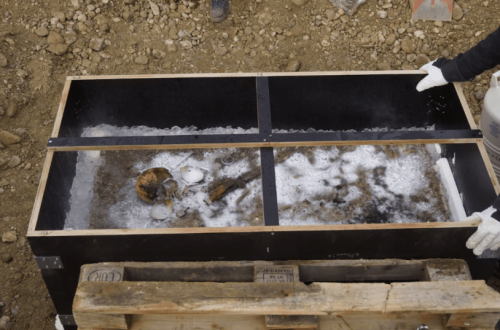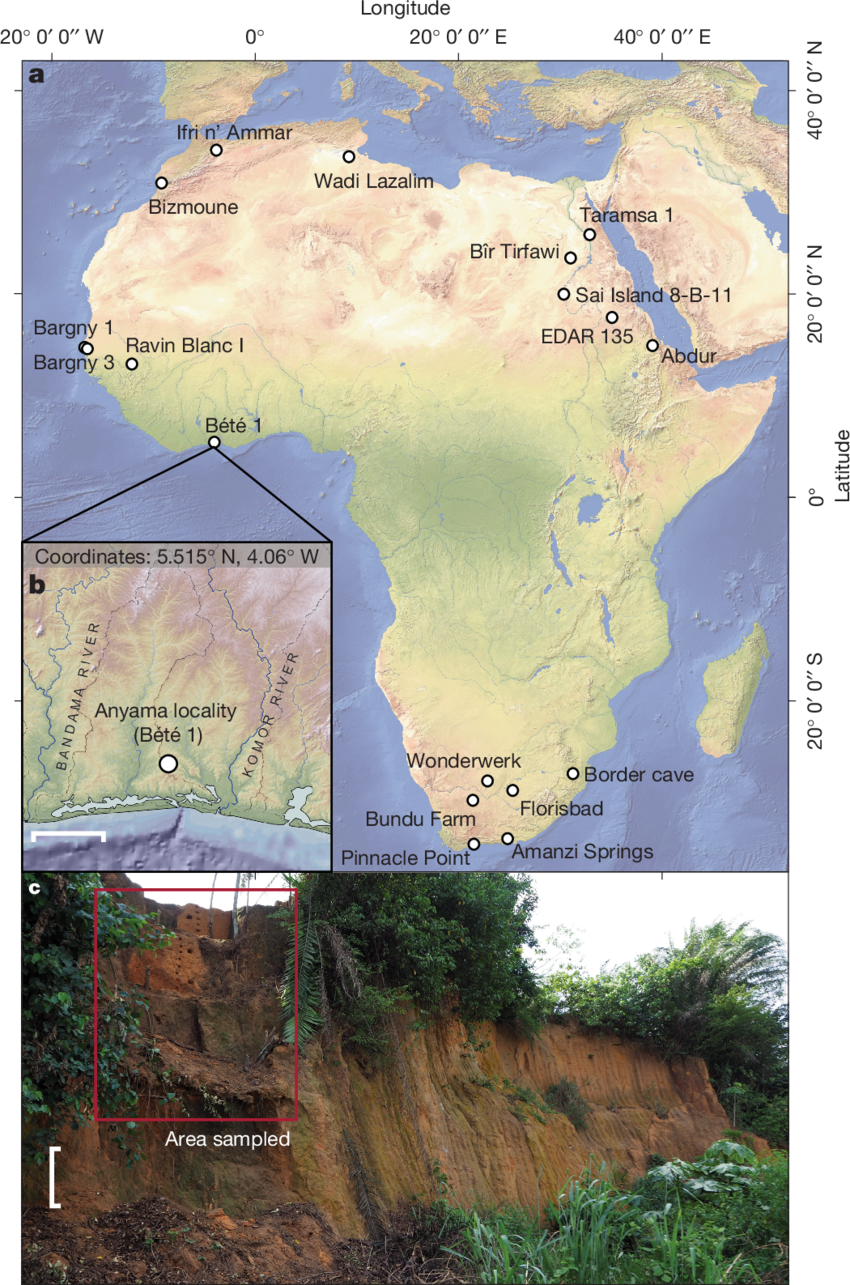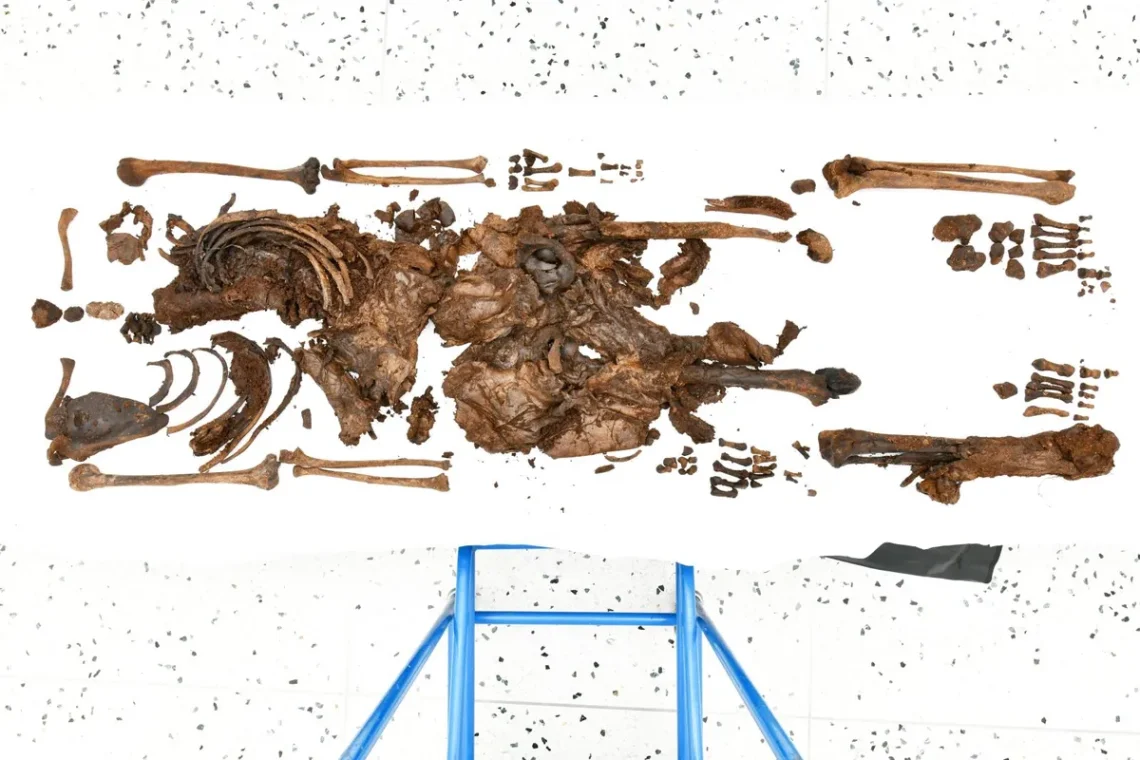The Allerum Dog, an 8,000-year-old canine skeleton unearthed in 1918 in Allerum Bog near Helsingborg, Sweden, offers insights into the role of dogs in Mesolithic hunting societies. The skeleton, studied by osteologist Elisabeth Iregren and archaeologist Kristina Jennbert from Lund University, reveals a flint-edged bone arrowhead lodged between its ribs, suggesting the dog was struck during a human-led hunt, later dying by a lakeshore and sinking into the bog. Iregren’s 1993 study in Archaeofauna highlights the dog’s traits: an agile, wolf-like build with erect ears, a defined skull stop, strong shoulders, and a sturdy femur, adapted for hunting. Its fur,…
-
-
A remarkable archaeological find in West Africa has unveiled evidence that early humans inhabited tropical rainforests as far back as 150,000 years ago, challenging long-held assumptions about the environments our ancestors occupied. The discovery, centered at the Bété I site in southern Côte d’Ivoire, marks the earliest known association between humans and wet tropical forests, pushing back the timeline of rainforest habitation in Africa by over 130,000 years. The Bété I site, first explored in the 1980s by a joint Ivorian-Soviet team, yielded stone tools such as picks and retouched flakes buried in layers of sediment. Initially, limitations in dating…
-
The Ballymacombs More Woman, a bog body discovered in Northern Ireland’s peatlands in 2023 near Bellaghy, was unearthed, and these 2,000-year-old remains of a young woman indicate a violent end, possibly indicating ritual sacrifice. In the marshy expanse of Ballymacombs More, workers re-grading the road on the peatland outside the village of Bellaghy stumbled upon a grim relic: human remains, remarkably intact after two thousand years. The waterlogged, acidic bog had tanned her skin to leather, preserving bones, hair, and soft tissue in a natural time capsule. Radiocarbon dating, conducted by archaeologists from Queen’s University Belfast, places her life between…






